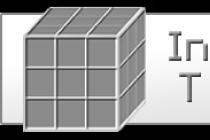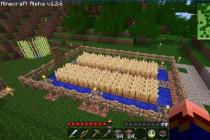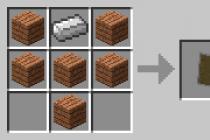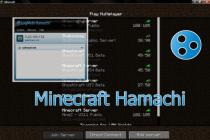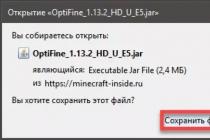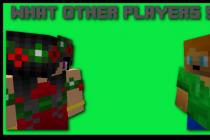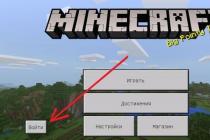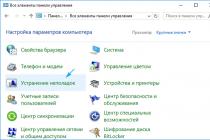It so happened that my attitude to raising children (and who else to educate, not adults) has always been based on humanism, bordering on connivance. Even in my youth, teaching English to teenagers in a private school and my peers in a medical college, I perceived each ward as a whole universe with its own unique laws, life circumstances, opportunities and talents. The students quickly got wind of this feature of the young teacher's worldview and, of course, sometimes shamelessly used it - telling amazing stories about unfinished homework and making me crawl under the teacher's table with laughter.
Of course, over time, my humanistic fever, not fully understood in my youth, faded a little - I began to understand that people, in addition to free will and choice, need rules, boundaries, rituals, stability and a foundation. Children - even more.
Nevertheless, I thought and to this day I consider myself not entitled to create greenhouse conditions around the child, trying not to adapt the lives of those close to me to the growing person, but to help the growing person to get used to the world around him. This is not a question of discipline and not an attempt to raise a child “comfortable” for society - quiet and always obedient (which, of course, is nothing wrong, but I only saw such children on Soviet postcards). Borders and rules are needed not so that the child is not noticeable, but to make it easier for him to get used to the world of people.
For example, the rule “listen to what they say to you, and then speak out yourself, it will be more convenient for everyone,” I consider it justified, and “I am an adult, I know better, and you are silent” - obscurantist. Boundaries should be drawn for the purpose of protection and prevention, and not for the purpose of prohibition.
Frame from the movie "Wall", 1982
The same rules have always applied to available information. The question "Where do babies come from?" - an honest answer in an accessible form, where, how and why. The question "Mom, will I die too?" - an honest affirmative answer and a conversation about the fact that the memory remains alive in our relatives, friends and descendants.
In general, my position in raising new people boiled down to two main factors: the desire to organically fit the child into the daily life of the family and the desire not to restrict his access to what does not pose a danger to his life and the comfort of others.
These two factors have influenced my attitude towards a growing person's access to digital entertainment. I, my family and my friends are modern people who have been actively using and interested in digital technologies, gadgets and the Internet since their youth. Soon the internet became my place of work; naturally, the son constantly saw his mother behind the screen of a laptop, smartphone and tablet; I'm used to the fact that I'm looking for answers to some of his questions in Google; to the fact that cartoons can be viewed on YouTube; to the fact that you can play Cut The Rope on your smartphone. I am pleased with the way my son gradually immersed himself in the digital information environment and I am sure that he has developed an adequate idea of the network for his age - as a place where knowledge is obtained, and where you can find everything that interests you if you wish.
Something went wrong
His son got his smartphone at the age of 5 - he got his father's old phone. He played on it all parts of Angry Birds (a great game for children who are not destined to walk with a slingshot in the yard) and Bad Piggies (a cool engineering puzzle - I couldn’t cope with the levels, but a five-year-old was easy). In the summer before entering school, he appeared in the arsenal of Minecraft Pocket Edition. I was even glad - how many times I wrote about this toy right here on Newtonew, and I was going to offer it to my son, but then somehow it just happened.
Minecraft is a game without exaggeration cool, almost immediately after the release, overgrown with a fan subculture. I am still not able to understand what is so attractive about it for children of senior kindergarten and primary school age. If adult players can be nostalgic for eight-bit graphics and enjoy the square Minecraft world, then such nostalgia is unknown to children. Nevertheless, elementary and middle school students are crazy about her - just look at how many let's plays are filmed and posted on YouTube by young unspoiled souls. I came to the conclusion that Minecraft combines everything that basically distinguishes computer games from all other types of entertainment:
- the ability to build your own world;
- a non-linear way of interacting with the game world (not like with a book);
- interactivity (not like when watching programs and movies);
- instant feedback;
- extensive opportunities for communication and self-expression (thanks to the gaming community).
These are excellent properties that develop systemic and strategic thinking, digital literacy, planning skills, and even communication skills. Under several conditions: you yourself know how it all works, you are ready to spend a lot of time learning about the game world together with your child, and… you don’t use the mobile version of the game.
It was Minecraft Pocket Edition, the official Minecraft mobile app, that led to disturbing results.
The Dark Side of Minecraft
We also had Minecraft installed on a free home laptop that did not really belong to anyone, and therefore passed into the possession of his son - on an old macbook (in this case, Mac OS is important). Anton launched his favorite toy, searched for tutorials himself, watched let's plays on YouTube. Everything he watched, I carefully controlled, because he surfed through my active Google account. The version of Minecraft that Anton played on a macbook, and the style of his game only aroused my approval - he learned simple commands in the terminal, found new blocks, learned how to handle them on his own, explored the possibilities of the world.
But the style of his game on a smartphone, I could not call constructive. One thing needs to be said here: there is a huge shady industry serving Minecraft - modifications, or simply "mods". A mod is a code file that changes the original content of the game. They can add new features, such as allowing their own music to play in the background, or adding electricity, elevators, or new dimensions to the game; can change the appearance, for example, change textures; and they can seriously affect the entire course of the game, giving a loophole for cheats - for example, giving an unlimited amount of resources. Mods are not officially supported by the manufacturer, but there are a huge number of launchers that allow you to install and run mods. This is very easy to do in Minecraft for Windows and in the mobile version of Minecraft.
The whole industry is built on these mods, millions of views.
Mods, with skillful handling, can greatly enrich the gaming experience, complicate and diversify the game; but, unfortunately, the possibility of easy money turns out to be much more attractive. How to install mods on Mac OS, Anton did not guess, but he also had a mobile version!
In general, all that Anton's game has turned into on a smartphone is the search, review and testing of dozens of different mods. It turned out to be forgotten the main goal of the game - the development of their own world. Fantasy, spatial thinking, patience needed to collect resources were left out of work.
All this has been replaced by a mindless race for new mods, their updates, short joy from visual goodies and a huge amount of resources, and quick disappointment from each acquisition - what you do not earn yourself will soon get bored.
And it will be difficult for an adult to stop himself if he finds himself in a giant hypermarket, where there is a lot of everything and everything is free - just reach out and take it. Candy? As much as you want. The most delicate pate? Yes, take it right from here. Lemonade? Croissants? Caesar salad? Imagine yourself in such a place. There is a great temptation to overeat, then suffer from indigestion, then reproach yourself for the weakness of the spirit and promise yourself that never again, but ... But here again the neon sign of this hypermarket, and again you cannot help it, and then again you are angry with yourself.
It is even more difficult for children to control their desires. And they also grow irritated by what they have received undeservedly, but they are not aware of the reason for their negative emotions.
After a couple of months of such a "game" in Minecraft, I got a capricious, apathetic, nervous child. A little more, and it would look like this canonical example:
I had to be drastic. During the winter holidays, after a week of skiing and reading books from his mother's childhood in his grandmother's house, Anton did not find his smartphone in his usual place.
Mom, where's the phone?
- He is temporarily not with us until we both understand what you are interested in, except for mods for Minecraft.
And you know what? This explanation, short and honest, was enough. Sometimes we check the official website together to see if there's an update for the game (not mods!). I did not restrict access to the laptop, in the desktop version of Minecraft, which I like, he plays on the weekends. Read the entire home library of children's books. Anton no longer depends on the charger, and the morning does not begin with the words “I will just install this mod and get dressed.”
And yet I do not lose my faith in video games and believe that they are the right place in school. After all, games at school are, by default, licensed versions without the simple possibility of bypassing and adult supervision. Moreover, there are successful examples and experiments - a Norwegian teacher, or even in Russian schools.
Modern parents are on the verge of making a huge mistake in raising their children. Wishing well for their children, they deprive them of time and space for games, thereby limiting the development of imagination - a skill that is the basis of innovation and competitiveness.
A study by toy company Radio Flyer and ReD Associates reveals the disturbing implications of today's overprotective parenting. Before each holiday, adults begin to puzzle over what kind of toy will be interesting and useful for their child. However, before purchasing another wooden construction set, parents should think seriously.
The development of the imagination is facilitated by games that child psychologists call "arbitrary" ( unstructured play) - in those there is no clearly defined scenario, there is no ultimate goal, devices are not used. The child himself invents his own worlds and embodies his own ideas.
According to a study conducted in the United States, children who are given freedom of action by their parents, that is, they are given the opportunity to decide for themselves when, where and what to play, have the most developed imagination. However, most of today's children simply cannot play by themselves - they need instructions from adults or the toy itself.
The conclusions are disappointing: today's children need to be taught to play arbitrary games. Child development specialist and psychologist Peter Gray also noted a steady reduction in time spent on free play. According to other data, children aged 8 to 18 spend an average of 6.5 hours in the company of gadgets daily, and many are even afraid to go out without an adult.
Modern parents are puzzled by how to create conditions for involuntary play. A study of children from infancy to 9 years of age showed surprising results - neither wooden toys nor their digital counterparts create the conditions for unstructured play. So what is wrong with parents?
Consequences of playing Minecraft
Take, for example, cubes. The current generation of children passively press the buttons and the toys themselves entertain them, and when the toy gets bored, they insistently demand another. Some parents have even formed a new tradition: throwing out "old" toys before the holidays to make room for new ones. Other parents admit that they buy their child a new toy a week, and also keep toys in reserve.
Having got used to the constant novelty and change of entertainment, children simply stop playing with ordinary cubes, as a result of which they lose their skills in playing with stationary objects. Parents shrug their hands: "We don't want our children to be bored." But therein lies the secret: boredom motivates children to play with “what is.” If we want to develop children's imagination, we need children to be bored.
And what about computer games like Minecraft, which one parent described as "dice on steroids"?

In this popular game, kids mine for resources, craft items, build buildings and explore new worlds. In the "Creative" mode, players have unlimited supplies of resources and tools, which allows you to create objects of increased complexity. That's where the unlimited freedom of imagination is - take it and build it!
However, the study found that after playing a series of Minecraft games, children felt jittery and annoyed. Many agree that the aforementioned play only "kills time" - once the child begins to understand the mechanics of the game well, that is, to play well, the experience of research and creation turns into endless construction in order to avoid boredom. One of the adults correctly noted that under such conditions, even a favorite pastime turns into a routine.
Creating conditions for unstructured play requires not only restricting the child from certain entertainment, but also providing him with complete freedom. However, as the study showed, this practice does not always show inspiring results - young respondents, left without their usual toys, started fights with peers (and sometimes with parents) and experienced irritation, drowsiness and confusion. Obviously, the problem here is not with toys, but with the fact that children are not used to playing on their own.
The idea of free games is discussed quite often, but ways to create conditions for such are rarely presented. Below are three excerpts from a study by child psychologist Peter Gray recommending the practice of free play.
1. Parents must clearly understand what “free play” is and what it gives
In free play, there is no clearly defined beginning and end - children entertain themselves, adults do not help them. This approach can confuse parents who are used to seeing educational and educational tasks in the game, as well as those who believe that participation in children's play helps to become closer to the child.
2. Children should play on their own every day
When parents try to introduce several hours of free play between other activities of the child, the latter experiences absent-mindedness and irritation. For this problem to disappear, children must learn to play on their own, and not wait to be entertained by parents, teachers, or new toys.
3. In free play, children should be guided by the behavior of adults
It is no secret that children copy the behavior of adults, but the latter, having plunged headlong into work, often forget about it. Parents should be an example for their children and show that spending time without gadgets can be a lot of fun.
How are these ideas put into practice? Quite simply, a photographer father takes his two-year-old daughter for walks. While he is filming nature, the child selflessly plays with what is nearby - he imagines, explores, learns the world. The adult does not interfere, the girl herself leads the process. However, the parent is nearby - minding his own business, he looks after her, and the child is inspired by the actions of the father and copies his behavior.
Minecraft is an incredibly popular computer game that many children enjoy. However, at the same time, some parents cannot share the joy of their sons and daughters regarding this game. There are a huge number of reasons why children love Minecraft, and the same reasons make parents fall into a stupor and scratch their heads thoughtfully. These 5 things kids really love about Minecraft. But you don’t even suspect that most modern parents simply don’t understand them.
Minecraft language

How can you explain the language of Minecraft in general? Friends come to visit your child, they gather in the room and start talking about noobs and endermans, while laughing and giggling, while the parents listen and think that it would be better if they talked about sports. Many parents are not even into sports, but at least they can participate in such a conversation.  Parents want to be involved in the lives of their children, but as soon as they start talking about Minecraft, they immediately begin to think that this is Latin. And when parents ask their children to explain one concept, then immediately there is a need to explain another concept, and after it another one. And by the time you understand why your child needed to kill the Ender dragon, half of your day has already passed. As a result, everything ends up with the child talking, and the parents just nodding and hoping that they did not just agree to buy some kind of addon.
Parents want to be involved in the lives of their children, but as soon as they start talking about Minecraft, they immediately begin to think that this is Latin. And when parents ask their children to explain one concept, then immediately there is a need to explain another concept, and after it another one. And by the time you understand why your child needed to kill the Ender dragon, half of your day has already passed. As a result, everything ends up with the child talking, and the parents just nodding and hoping that they did not just agree to buy some kind of addon.
Youtubers

It’s not enough that Minecraft itself is strange for parents, there are also a million YouTube stars who talk about this game, demonstrate their achievements, share jokes that only those who play Minecraft understand. And this is not about any particular YouTuber. The problem will be understood by parents who have had to snatch the tablet from the hands of a child who has been listening to someone talking about the game for several hours in a row. Yes, many of these YouTubers make more in a month than their parents make in a whole year, and this may annoy the parents in the slightest, but it's not about the money. It's all about sanity, and hour-long videos of teenagers recording loud, annoying Minecraft movies in their rooms have grown-ups saying trite things like "Where is the world going?" and so on. And this is terrible, because it makes parents feel like their parents used to feel - old and out of date. And the circle is closed.
Addiction

Many parents do not understand one thing: is nicotine or some other drug added to Minecraft? Every parent whose child plays Minecraft understands how difficult it is to get him to turn off the game. It comes to tears, screams and even fists. Children even begin to swear at their parents. And so do both young children and adolescents. Sometimes one gets the feeling that if zombies break into the real house of children, they will not care, but if this happens to their house in Minecraft, then the end of the world will come. For many parents, this game looks like some kind of pixelated mess, but the kids can't agree with that.
Disorientation

If you are trying to connect with your child by playing Minecraft, then you need to remember the vomit bowl. No, the game is not disgusting or nasty, but it is disorienting. You start to feel dizzy from everything that is happening around you, you do not understand what to do, and you find yourself in some room with a pickaxe in your hands. And then your child starts laughing at you as if you are a complete idiot, and not an adult with a higher education and a prestigious job. And then the child himself sits down at the computer, his blue eyes start darting around the screen while he corrects the situation you created, and he starts to say: “You see? Do you see?" But you still don't see the difference between what you did and what he does.
Trying to understand makes things worse

Like any good parent, when your child starts playing Minecraft, you try to better understand the game by reading about it online. Here’s an excerpt from one such article called Minecraft Parent’s Guide: Minecraft is a sandbox game created by Swedish programmer and gamer Markus “Notch” Persson. The world of the game is procedurally generated, and its essence lies in the collection of resources, the creation of items, construction and (if the player wishes) battles. Many parents have encountered strange texts in their lives, but this is just crazy.
conclusions

The conclusion can be drawn as follows: most children like this game, while some parents simply cannot understand it. And the saddest thing is that many parents initially thought that they would not have problems understanding. Not only Minecraft, but everything that concerns their children. When people become parents, they don't think they'll ever have to say "these days" or "why can't you play normal games?" as these are some of the most annoying things anyone has ever said to them. their parents when they were young. However, this is what parenting is all about. It's a reality where you're getting older and trying to understand your kids, wishing they could just do what you understand.
The child is trying to show you new achievements in his Minecraft world, and you praise him on duty and add: “It would be better if you did this at school.” Just don't say you don't. In Minecraftplays almost halfchildren in the world. And this is really more interesting to them than.
Microsoft has figured out how to use children's love for Minecraft to the benefit of learning. The educational version of the Minecraft for Education game in Ukraine will be available from September this year.
Roman Rudyuk, Head of the Partnership in Education program at Microsoft in Education, told the site what subjects can be studied with the help of a favorite toy, and whether Ukrainian school teachers are ready for such changes.
Modern children were born and grow up in a digital world. They have a different way of thinking, speed of perception. Contact with the world through the screen of the tablet is natural for them.
These children understand computers and the Internet, sometimes better than their parents. At the age of two or three, they find and download cartoons for themselves, remove passwords from their parents' smartphones and play games.
This is not surprising given the pace at which technology advances. Another thing is surprising: the school of these children is still trying to teach according to the old principles and schemes.
The tablet, smartphone at school is perceived as a hindrance to learning. They try to stop communication of a child with a computer, to reduce it to a minimum. Discuss the harm of computer games, advise how to wean a child from the computer. If they allow it, then as a toy, as a reward for good behavior.
But why not try to educate and educate with the help of gadgets? After all, tablets and games are wonderful tools, and they are closer and more understandable to children than textbooks and notes on the board.
Two years ago, when Microsoft bought the rights to Minecraft, no one understood why. And with the help of the game, they decided to introduce gamification into the educational system.
Why Minecraft?
Because children love him, and because he opens up huge scope for creativity. The basic element of the game is dice. A completely universal thing from which you can create any objects, set and solve any problems. At the same time, children do not passively perceive information, but actively participate in the process. This makes it easier to both understand the topic and remember it.
Mathematics, biology, history: where else is the benefit of the game Minecraft
Minecraft for Education is not a collection of ready-made schemes and lessons. It is a platform that teachers can use to create lessons. It does not replace the traditional curriculum, but complements it, visualizes and fills it with creativity.
The program works for any school subject, because any idea can be realized in it.
Geography
It's one thing to see an Egyptian pyramid in a textbook in a picture with a couple of paragraphs of text. Another thing is to move inside the building, examine it in real size, wander inside, see what it consists of, how the tombs are located, and so on.
Or create a pyramid of cubes on your own - first study the topic in detail, and then transfer this knowledge to the Minecraft world.
You can build landscapes from cubes, study the structure of the earth's crust - not look at dusty plaster models from the closet, but create projects on your own.
Or contour maps. Do not paint over with a pencil in a notebook, but build in Minecraft, as in this lesson.
Story
Instead of memorizing dates and names, we rebuild, for example, wooden fortresses, give the participants the roles of historical characters and play out, for example, the history of the baptism of Kievan Rus as part of the lesson.
The same applies to any historical event. Minecraft allows you to create a world with all the nuances of the studied time: architecture, landscape, and so on.
Mathematics
Equations in a notebook are boring. And if you set equations right in the game, and the solutions to these equations will be the coordinates of the point on the map where the treasure is hidden, it will become much more interesting to solve them.
Biology
Build a dinosaur skeleton out of blocks? Easy! Or a model of the human body. It's interesting what we're made of.
In this lesson, children travel inside a living cell and learn how its organelles work.
Chemistry
Here you can not be limited to the construction of a model of the molecule. Chemistry is at the very core of Minecraft. Having started the game, the character extracts minerals and crafts the necessary materials and items from them.
The idea of synthesis can be used during the lessons so that children understand how substances interact and what comes out of it.
Physics
The teacher explains the behavior of matter in solid, liquid and gaseous states. All participants have their own characters, and the properties of matter in Minecraft allow you to display real physical processes on Earth.
What else>
Computer games are often used in education. But they are usually stereotyped, the plots and the possibilities of solutions in them are limited.
Minecraft for Education is not limited to one subject. This is a constructor, thanks to which phenomena can be studied from different angles.
The teacher created a task: you need to build a hotel. He assigned a price to each game resource, and the children received a certain budget at their disposal.
The kids got to work. They think about how to build more conveniently and more profitably. They calculate costs, choose materials, think over the layout of rooms, from automatic opening of doors and the location of the switch, ending with flowers on the balcony and a toilet.
This complex object first appears in their head, and then is transferred to the Minecraft space.
They seek information, consider, discuss. They learn to argue and defend their opinion, to work in a team. Is it possible to attribute such a project to any particular subject? Or evaluate its benefits only within the framework of the school curriculum?
Minecraft for Education helps to view the world without dividing it into objects, but in a complex way. Understand and recreate the mechanisms and processes that work in it. The child understands that bread does not begin with dough. You need to plant grains, grow, harvest, grind, and then prepare the dough and bake.
And the spoon on his table is the ore that was mined, melted, refined, turned into metal and made from it the desired object. He realizes this without explanation and cramming - it's just that such processes are going on in his game.
Minecraft vs Minecraft for Education: What's the Difference?
In the game version of Minecraft there are many materials and phenomena that are not in wildlife. For example, there are dragons, there are non-existent materials and chemical elements. In the game, this is interesting, but in the training version it only gets in the way.
There is no way to add fantastic mods (modifications) in Minecraft for Education. There are only realistic processes that exist in life.
The second feature is technical. In the game version, to play with friends, you need to look for a server, connect to it. There is no guarantee that outside players will not come there and destroy the buildings - children love to misbehave.
Minecraft for Education does not require servers. The teacher creates a web class, the students connect to it through their accounts, and the game can begin. You can connect from any computer, both at home and at school.
A rich toolkit has been created for the teacher: he can create tasks, allocate zones for construction, and manage the process.
How to create learning worlds, how to give tasks - there are clear instructions for everything.
Computer games in education: what teachers think about Minecraft for Education
There is bad news and there is good news.
Of the minuses: it is difficult for most teachers to rebuild, to agree that the usual methods of teaching with modern children do not work well. Not everyone is ready to use the gaming toolkit.
What can we say about games, even if not all teachers are familiar enough with the Internet to use it in their work.
On the plus side: there are many young teachers who are ready to teach in a new way and are looking for progressive methods. Since September of this year, about a hundred schools in Ukraine are planning to introduce a computer game into education. Perhaps there will be more of them, it depends on the initiative of directors and teachers.
So far, this is difficult: in addition to striving for something new, at this stage, the teacher also needs knowledge of English. Volunteers during beta testing have already created their own lessons that can be used as an example. True, this is only English-language material. In June, Ukrainian teachers also received access to beta testing. So, there will be a lot of ready-made lessons available.
For teachers who want to speak to children in the language of the game that they understand and are interested in, Microsoft provides meetings and training. Trains trainers who pass on knowledge to colleagues.
In Ukraine, there are already about 150 teachers who are learning how to use new technologies and immediately apply it in their work.
Microsoft does not create lessons or courses by subject. It gives general ownership of the program, general direction. And every teacher or parent who wants to teach a child in an interesting way will be able to create their own lessons, implement their own ideas.
Some areas of the brain that the game does not stimulate can remain underdeveloped when sitting at the computer for a long time.
Video of the computer game Minecraft in March 2015 alone has collected 3.9 billion views on YouTube
Children's attachment to the game of building their own world out of Lego-like blocks is worrying parents all over the world. Some parents recognize that the game has replaced all other activities for children and either severely limit the time spent at the computer screen, or prohibit the game altogether. At the same time, others believe that YouTube is the new generation of television, and Minecraft promotes creativity and promotes communication with peers.
However, psychologists Yoon Lee and Robert Peisonau argue that the game is actually not as creative as some parents believe.
“The creativity of the game is actually built into the program itself - it's a lot of combinations, tools and materials. And the players get one task: to create more and more complex structures. While play may seem creative at first glance, it is actually quite a monotonous activity, and most of the children we studied felt tired and irritated after long periods of play,” the psychologists say.
In addition, the game does not have an open ending that would encourage creative thinking, but rather provides for the monotonous development of endless buildings.
Previously, Chinese scientists found that avid players who spend about 10 hours in the world of computer games, the amount of gray matter responsible for the ability to think, is much less than those who play about two hours a day.
As early as the 1990s, researchers warned that because video games only stimulate the parts of the brain that are responsible for vision and movement, other parts of the brain responsible for behavior, emotions, and learning may be underdeveloped.

